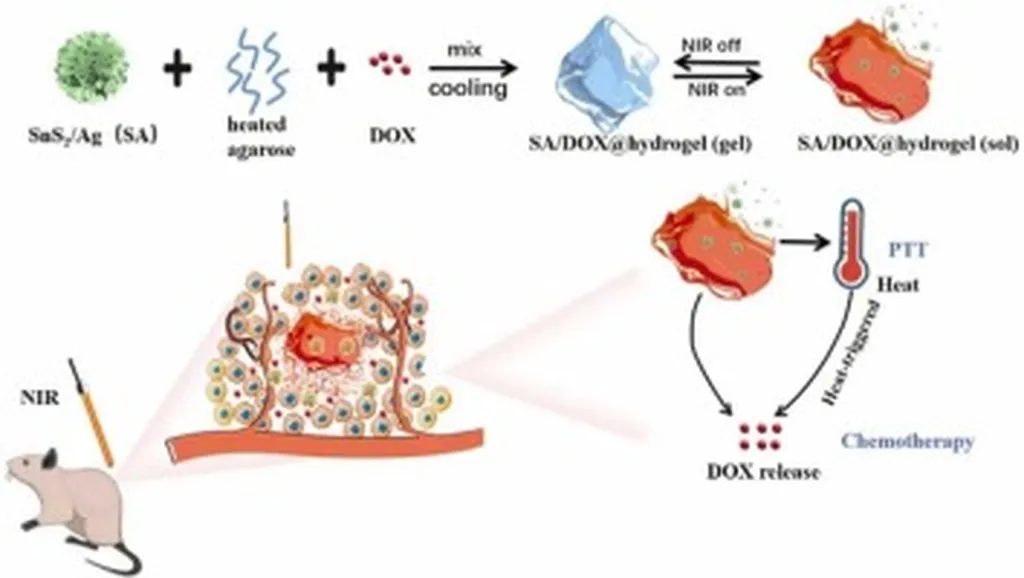In a groundbreaking development poised to reshape lung cancer treatment, researchers have engineered a novel hydrogel nanocomposite that harnesses the power of near-infrared (NIR) light to deliver a potent therapeutic punch. The study, led by Dr. Xiaoqin An of the Department of Respiratory Medicine at Shanxi Province Cancer Hospital, introduces a sophisticated system that combines carbon nanodots, platinum nanoparticles, and the chemotherapy drug doxorubicin within a chitosan-based hydrogel. This innovative approach promises to enhance the precision and efficacy of lung cancer therapy, offering new hope in the fight against one of the deadliest cancers.
The nanocomposite, dubbed CN-Pt-DOX@CS+NIR, is designed to respond to NIR light, triggering a cascade of cellular events that culminate in the targeted destruction of lung cancer cells. “The beauty of this system lies in its multifaceted approach,” explains Dr. An. “By integrating carbon nanodots, platinum nanoparticles, and doxorubicin, we’ve created a synergistic effect that amplifies the therapeutic impact.”
Carbon nanodots play a pivotal role by generating reactive oxygen species (ROS) upon NIR irradiation, increasing oxidative stress and initiating apoptosis—the programmed death of cancer cells. Platinum nanoparticles further amplify this effect by disrupting the mitochondrial membrane potential, while doxorubicin, a well-established chemotherapeutic agent, intercalates DNA and inhibits topoisomerase II, leading to cell death.
The chitosan-based hydrogel matrix serves as a controlled release system, ensuring that the therapeutic agents are delivered precisely where they are needed. This localized delivery not only enhances the efficacy of the treatment but also minimizes side effects, a significant advancement in the field of oncology.
The study, published in ‘Macromolecular Materials and Engineering’ (translated to English as “Macromolecular Materials and Engineering”), demonstrated the nanocomposite’s effectiveness in vitro on A549 and H1299 lung cancer cell lines. Various assays, including AO/EB and DAPI staining, flow cytometry, and RT-PCR, confirmed the significant cytotoxicity and apoptosis induced by the NIR-responsive system.
The implications of this research extend beyond the realm of cancer treatment, offering potential benefits for the energy sector as well. The controlled release mechanisms and targeted delivery systems developed in this study could inspire innovations in energy storage and conversion technologies. For instance, the precise delivery of therapeutic agents could be adapted to enhance the efficiency of catalytic processes in energy production, reducing waste and improving overall performance.
Dr. An’s work represents a significant step forward in the quest for more effective and targeted cancer therapies. “Our goal is to translate these findings into clinical applications, ultimately improving patient outcomes and survival rates,” she states. The commercial potential of this technology is immense, with applications ranging from advanced medical treatments to innovative energy solutions.
As the scientific community continues to explore the potential of nanomaterials and smart drug delivery systems, this research serves as a beacon of progress. The integration of cutting-edge materials and technologies holds the promise of revolutionizing not only cancer treatment but also various industries, paving the way for a healthier and more sustainable future.

